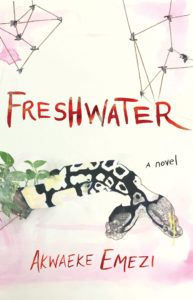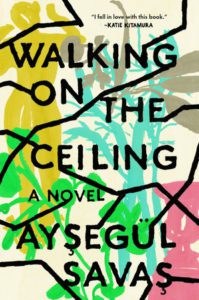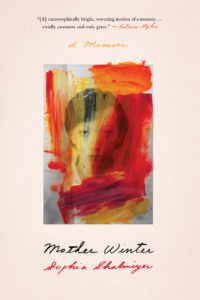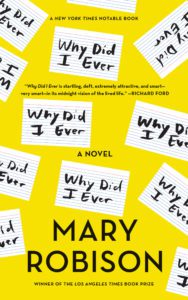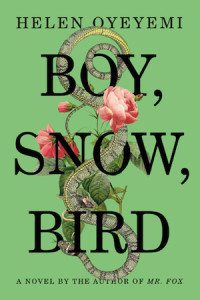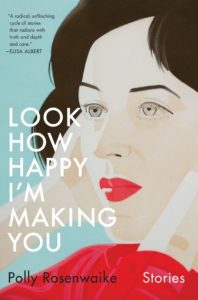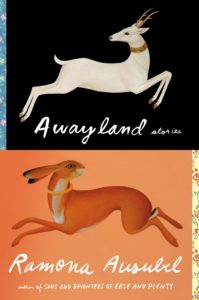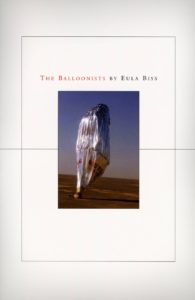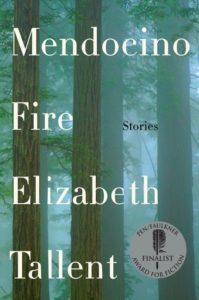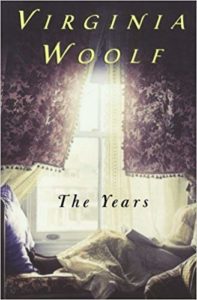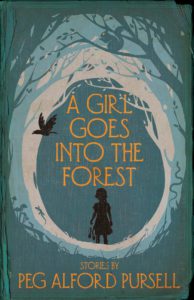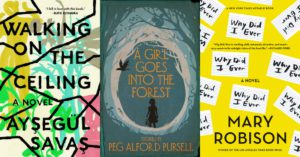
One of the profound pleasures as a writer is reading for the ways story and the writing are inseparable. I’m drawn to books that defy, blend, or bend categories. Such hybrids show what’s possible with language. The following list comprises books that have lately been on my mind for their non-binary nature, in no particular order. Each author uses language brilliantly and challenges ideas about form and categorization.
***
Freshwater by Akwaeke Emezi
This poetic novel is narrated by the ogbange, “godly parasites with many heads,” that reside within Ada, a young Nigerian woman who moves to North Carolina for college. As Ada becomes an adult, the gods take over. With the aid of Igbo lore that Emezi layers into the astonishing story, we find what happens to a fractured self when the body is only a vessel to the demons carried inside: “We did not come alone. With a force like ours, we dragged other things along—a pact, bits of bone, an igneous rock, worn-out velveteen, a trip of human hide tying it all together.”
Walking on the Ceiling by Ayşegül Savaş
The short lyrical chapters in this book alternate in place and time from Paris, where the protagonist moves after her mother’s death orphans her in young adulthood, to Istanbul where she grew up with her parents. The story is framed by narrator Nunu looking back on her time spent in Paris when she met M., a novelist, and they became friends who walked through the city telling one another stories about Istanbul and their pasts. Savaş’s coming-of-age novel explores loneliness, memory, and intimacy, and the shared nature of stories told to one another.
Mother Winter by Sophia Shalmiyev
Published as memoir, Mother Winter resists categorization. Fragmentary, associative, and recursive, this book is driven by Shalmiyev’s fierce intelligence, poetic expression, and feminism. I found myself check-marking again and again: for the beauty of the language, the originality of expression, the sharp, spot-on insights, for new information that I knew I would want to later look up. There couldn’t be a more perfect combination.
Why Did I Ever by Mary Robison
This isn’t Mary Robison’s first novel but it is arguably her most complex, constructed as it is of collaged segments, most of which are only numbered, while others have titles—titles that are so intriguing that when reading the book again recently, I found myself frequently pausing to take in and examine how these titles function for their sections. Examples: “But, But, But”; “Wear a Sun Hat”; “And Yet.” Often, like the rest of the book, a title is uproariously funny. Robison intertwines wicked funny with wicked smart, and this book is often cited for its humor. But I can never read it without feeling scraped raw by its poignant portrayal of a mother whose heart is pierced by the plights of her two grown children, one a victim of a horrible crime and the other a recovering heroin addict.
Boy, Snow, Bird by Helen Oyeyemi
Oyeyemi is surely one of the most inventive, genre-blending/-bending writers around, and it’s difficult to pull one book from her oeuvre to spotlight, but lately I’ve been thinking about Boy, Snow, Bird. This book takes the fairy tale “Snow White” as its source material, while also looking at race in 1950s America and “passing.” At its heart, the book, in feminist Oyeyemi’s own words: “is very much a wicked stepmother story. Every wicked stepmother story is to do with the way women disappoint each other, and encourage each other, across generations.” Very recently a friend told me she’d gone to hear Oyeyemi speak and the author said that this novel was one that she felt as a duty to write. I don’t know what that means, precisely, but I like thinking about that as another facet of my fascination with this book.
Late in the Day by Tessa Hadley
There are innumerable reasons to treasure Tessa Hadley’s books: their psychological depths, astutely observed and sensuous details (whether of human nature or of natural settings), the genius character descriptions. Her latest novel, Late in the Day, is only the most recent example of Hadley’s deftness with character descriptions. For instance, Hadley writes: “Alex was stocky, medium height—she was probably an inch or so taller than him, even in her bare feet, only he’d never believe it.” Her descriptions don’t rest at providing physical details but deepen and complicate relationships.
Look How Happy I’m Making You by Polly Rosenwaike
This is a cycle of stories about motherhood, from the trying to become pregnant, to the unwanted pregnancy, to the unexpected loss, and shades and nuances between—and it’s hard to believe that such a collection hasn’t existed before. The sheer absurdity of the absence of a collection that deals explicitly with how motherhood affects a woman’s sense of self (to my knowledge), primed me to love it. But it’s the book itself that resonates, its stories with their clear language, and precise, intimate details, the protagonists’ worlds portrayed so unflinchingly: “And though we had our moments of tunneling into the past with hard hat and headlamp, for the most part, out of loyalty and love, fear and denial, we didn’t want to think about how our mothers had raised us.”
Awayland by Ramona Ausubel
This collection of eleven stories is structured into four parts with headings: “Bay of Hungers”; “The Cape of Persistent Hope”; “The Lonesome Flats”; and “The Dream Isles.” That alone gives a writer ideas about fruitful ways to shape a story collection. As does the elegant structure of the individual stories, somewhere referred to like so: “with plots unfolding like exotic flowers, calm yet bizarre.” Then there’s the imagery and metaphor, the crystalline language. All works in service to the author’s focus on the nature of relationships, primarily among family members. On the surface, a story may seem whimsical, like “You Can Find Love Now” that features Cyclops writing his dating profile, but with Ausubel, who knows how to write humor and irony to great effect, each story strikes deep.
The Balloonists by Eula Biss
Published as poetry, this book of prose poems adds up to something different, a hybrid of poetry and nonfiction. In a roundtable discussion at Gulf Coast, Biss says: “For me, genre is a continuous—rather than compartmentalized—space, and I write across it as my subject demands and my abilities allow.” The Balloonists blends several narrative styles—dialogue, vignette, prose poem—and is made up of half-memories, black-box transcripts, and soundbites from family members that most often concern her mother’s thwarted artistic ambitions. This is the gorgeous ending of The Balloonists: “The stories have been rewritten so that the woman who steps out of the ocean, perfect and naked, does not slip back into the skin of a seal. Cartoon fairly tales end in a shower of flower petals falling over a wedding as the credits begin. They should end with the woman disappearing into the sea.”
Mendocino Fire by Elizabeth Tallent
I have a love for long sentences, for those that can cover so much territory, backward and forward and branching in all directions. Elizabeth Tallent writes some of the most beautifully architectured long sentences ever. Example, from her collection of ten stories, Mendocino Fire, specifically the story “The Wrong Son”:
Nate conjured her expert theft of his cigarette, her chin tilted up, the crawl of smoke from her parted lips, but this version was too accurate, friendly, failing to mine the erotic potential of her vehemence, and fuck this, he was too old to live in such close quarters with his dad, two berths angled toward each other in the V of the bow, the iron woodstove crowding space even more and smelling sickeningly of the boot polish Shug had dabbed on its scratches.
The Years by Virginia Woolf
Woolf’s last novel may not be the book she is most remembered for writing. While her mastery at portraying interiority is in full evidence, as with her earlier works of fiction, what makes The Years stand out is the spiritual territory that’s covered. The characters aren’t focused on an afterlife, but rather on how to live in “this world,” with others, the success of which must be based on a better knowledge of oneself, which can fell like “standing on the edge of a precipice with her hair blown back… just about to grasp something that just evaded her.”
Meander, Spiral, Explode: Design and Pattern in Narrative by Jane Alison
This book on craft is introduced, in part, by the author in following way:
For centuries there’s been one path through fiction we are most likely to travel—one were actually told to follow—and that’s the dramatic arc: a situation arises, grows tense, reaches a peek, subsides… But something that swells and tautens until climax, and collapses? Bit masculo-sexual, no? So many other patterns run through nature, tracing other deep motions in life. Why not draw on them, too?
Alison talks about her fascination with patterns and then goes on to share several narrative designs whose patterns can be found in nature. Example: “Energy might also flow in smaller waves, wavelets… a sense of ripple or oscillation, little ups and downs, might be more true to human experience than a single crashing wave. I’m more likely to feel some tension, a small discovery, a tiny change, a relapse.”
And to close out this wonderful list, we just had to include Peg’s new story collection, A Girl Goes into the Forest, forthcoming from Dzanc Books on July 16! – Ed.
A Girl Goes into the Forest by Peg Alford Pursell
Following her acclaimed debut, Show Her a Flower, A Bird, A Shadow, award-winning author Peg Alford Pursell explores and illuminates love and loss in seventy-eight hybrid stories and fables. A Girl Goes into the Forest immerses readers in the complex desires, contradictions, and sorrows of daughters, wives, and husbands, artists, siblings, and mothers. In forests literal and metaphorical, the characters try, fail, and try again to see the world, to hear each other, and to speak the truth of their longings.

